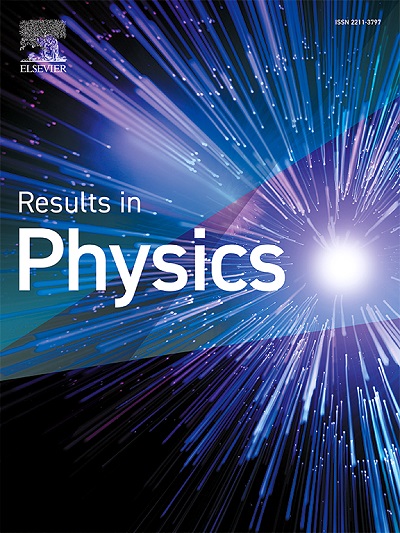All-dielectric coding metasurface designs for spin-selective beam shaping and multichannel optical vortex beam manipulation
IF 4.4
2区 物理与天体物理
Q2 MATERIALS SCIENCE, MULTIDISCIPLINARY
引用次数: 0
Abstract
Enhancing the information-carrying capacity of incident light using multifunctional metasurfaces have attracted considerable interests due to its promising applications in high-secure information encryption and communication. Incorporating spin-dependent wavefront control into all-dielectric designs is particularly important, as it not only allows information encoding based on the polarization state of light but also significantly enhances the channel capacity and security of optical communications. This paper explores all-dielectric coding metasurface that not only contribute to the fundamental understanding of spin-dependent light-matter interactions but also facilitates spin-switchable wavefront manipulation. To authenticate the proposed concept, we utilize a dielectric metasurface constructed by silicon (Si) nanobricks arranged in a square lattice. Through the strategic design of coding patterns, we manipulated the geometric phase and propagation phase at a wavelength of 780 nm to enable spin-dependent wavefront control, resulting in enhanced and complex functionalities, including manipulation of optical vortex beam (VB) carrying orbital angular momentum (OAM) with varied topological charges and a beam shaping that effectively split and divide the incident beam at an appropriate angle. In addition, the convolution operations further augment the functionality of all-dielectric coding metasurfaces, enabling more complex and multichannel manipulations. Our design method offers a simple and effective approach, which promises further applications in high-capacity encrypted communications, quantum information processing, non-invasive imaging and diagnostic systems.

用于自旋选择光束整形和多通道光学涡旋光束操纵的全介电编码超表面设计
利用多功能元表面增强入射光的信息承载能力,在高安全的信息加密和通信中具有广阔的应用前景,引起了人们的广泛关注。将自旋相关波前控制引入到全介质设计中尤为重要,因为它不仅可以基于光的偏振状态进行信息编码,而且可以显著提高光通信的信道容量和安全性。本文探讨了全介电编码超表面,它不仅有助于对自旋相关光-物质相互作用的基本理解,而且有助于自旋可切换波前操作。为了验证所提出的概念,我们使用了由排列在方形晶格中的硅(Si)纳米砖构成的介电超表面。通过编码模式的策略设计,我们操纵了780 nm波长下的几何相位和传播相位,从而实现了自旋相关波前控制,从而增强了复杂的功能,包括操纵携带轨道角动量(OAM)的具有不同拓扑电荷的光学涡旋光束(VB),以及有效地将入射光束以适当的角度分裂和分割的光束整形。此外,卷积操作进一步增强了全电介质编码元表面的功能,实现了更复杂和多通道的操作。我们的设计方法提供了一种简单有效的方法,有望在大容量加密通信,量子信息处理,非侵入性成像和诊断系统中进一步应用。
本文章由计算机程序翻译,如有差异,请以英文原文为准。
求助全文
约1分钟内获得全文
求助全文
来源期刊

Results in Physics
MATERIALS SCIENCE, MULTIDISCIPLINARYPHYSIC-PHYSICS, MULTIDISCIPLINARY
CiteScore
8.70
自引率
9.40%
发文量
754
审稿时长
50 days
期刊介绍:
Results in Physics is an open access journal offering authors the opportunity to publish in all fundamental and interdisciplinary areas of physics, materials science, and applied physics. Papers of a theoretical, computational, and experimental nature are all welcome. Results in Physics accepts papers that are scientifically sound, technically correct and provide valuable new knowledge to the physics community. Topics such as three-dimensional flow and magnetohydrodynamics are not within the scope of Results in Physics.
Results in Physics welcomes three types of papers:
1. Full research papers
2. Microarticles: very short papers, no longer than two pages. They may consist of a single, but well-described piece of information, such as:
- Data and/or a plot plus a description
- Description of a new method or instrumentation
- Negative results
- Concept or design study
3. Letters to the Editor: Letters discussing a recent article published in Results in Physics are welcome. These are objective, constructive, or educational critiques of papers published in Results in Physics. Accepted letters will be sent to the author of the original paper for a response. Each letter and response is published together. Letters should be received within 8 weeks of the article''s publication. They should not exceed 750 words of text and 10 references.
 求助内容:
求助内容: 应助结果提醒方式:
应助结果提醒方式:


